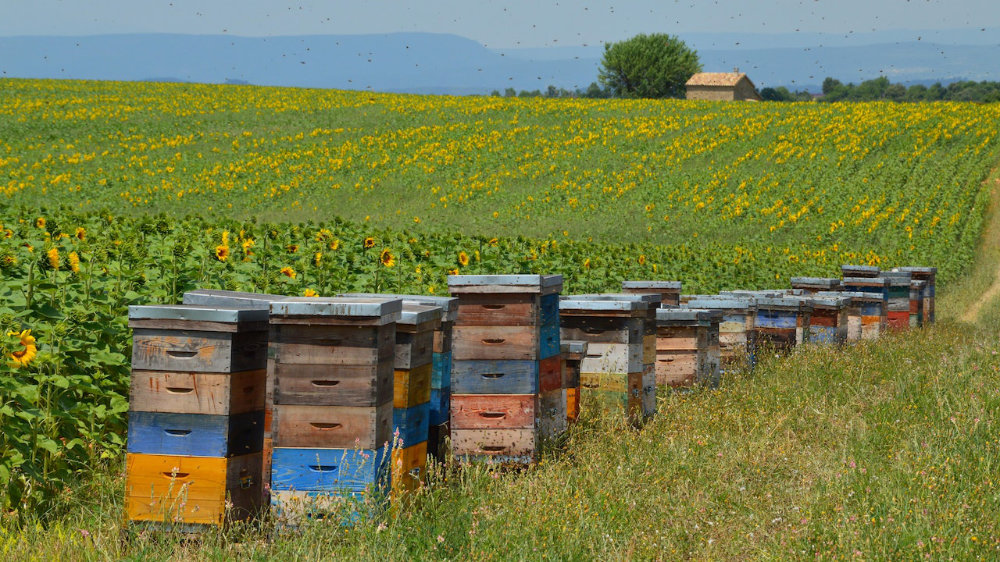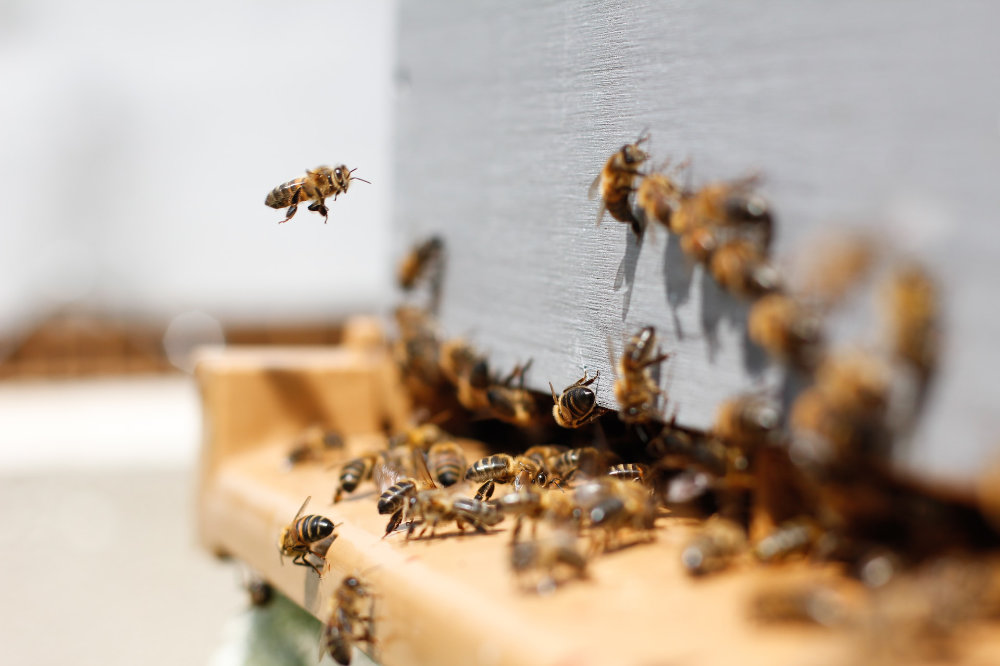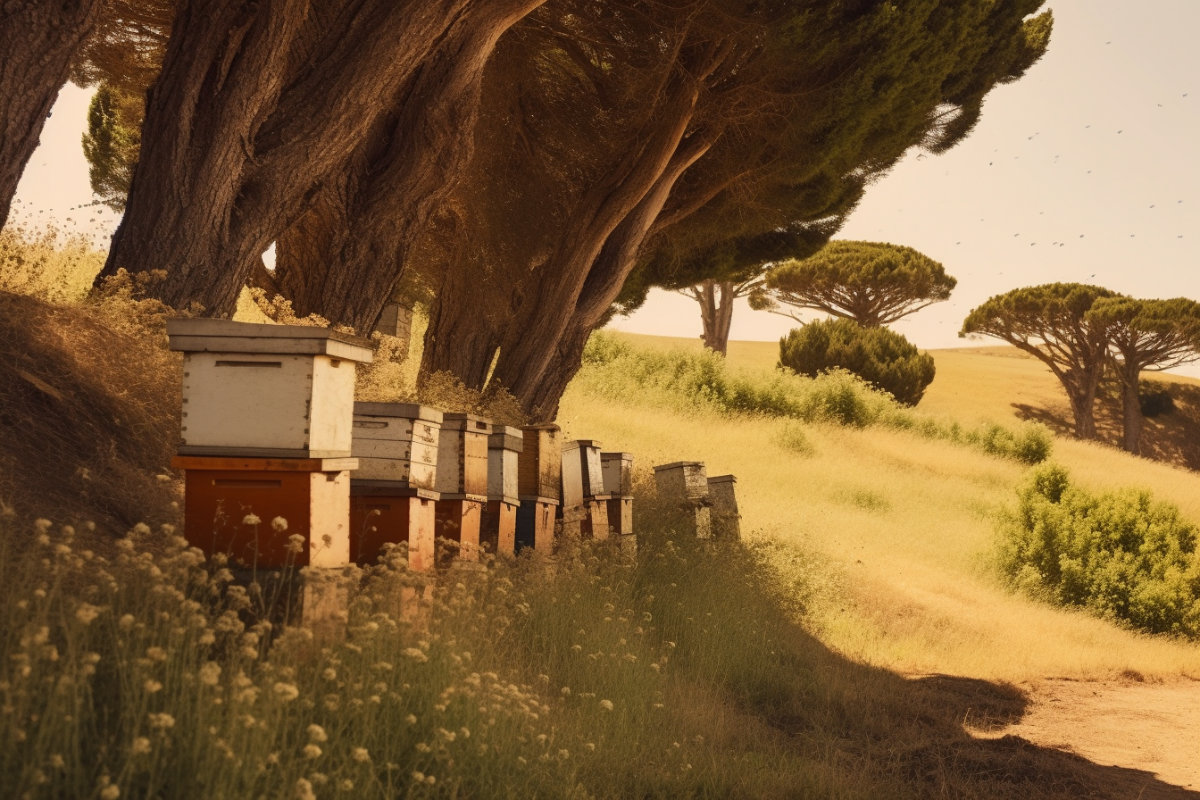The importance of beekeeping
Beekeeping, also known as apiculture, is not just a hobby—it’s an essential component of global agriculture. Bees play a critical role in pollinating many of the plants that make up the world’s food supply. They contribute to biodiversity, aid in the growth of trees and flowers, and of course, they produce honey—an all-natural sweetener and medicinal product used by humans for thousands of years.
Moreover, beekeeping can be a profitable endeavor for individuals and businesses. The products derived from beekeeping, such as honey, beeswax, pollen, propolis, royal jelly, and bee venom, are all marketable and beneficial to human health and lifestyle in various ways.
Overview of hives per acre concept
In the realm of beekeeping, one crucial aspect to consider is how many hives to place in a particular area, often quantified in hives per acre. This balance isn’t just about maximizing honey production; it’s also about ensuring the health and well-being of your bee colonies. Too many hives in one area can lead to overcrowding and insufficient food sources for the bees, while too few can mean the underutilization of space.
The concept of hives per acre varies depending on several factors including the type of bees, the local environment, available forage, and the specific goals of your beekeeping operation. In the following sections, we will delve deeper into these factors, offering guidance on how to optimize your beekeeping setup to balance productivity, profitability, and the health of your bees.
Understanding Beekeeping Density

The Concept of Beekeeping Density
Beekeeping density refers to the number of hives kept per unit of land area, often represented as hives per acre. It’s a critical concept as it helps to maintain a balance between the colony’s need for food and the carrying capacity of the land. By optimizing the beekeeping density, beekeepers can help ensure the sustainability and productivity of their hives.
Factors influencing Hive Density
Various factors influence optimal hive density. These include:
- The available forage: Areas rich in flowers can support a higher density of hives.
- The season: During some seasons, flowers and therefore food sources for bees may be scarce, requiring a reduction in hive density.
- The type of bees: Some bee species or breeds may be more efficient foragers or better adapted to high-density living.
- The local climate: Weather conditions, particularly temperature and rainfall, can affect the availability of forage and thus the suitable hive density.
How Many Hives per Acre: The Standard Rule
The One-Hive-Per-Acre rule
The ‘one-hive-per-acre’ rule is a standard guideline often cited in beekeeping. This is based on the assumption that, on average, an acre of land can provide enough forage to support a single hive across the seasons. However, it’s important to remember that this is a general rule and not a strict standard.
Understanding the Exceptions
There are many exceptions to the ‘one-hive-per-acre’ rule. For instance, in regions abundant in flowering plants or those with a long blooming season, it may be possible to sustainably keep more than one hive per acre. On the other hand, in areas with poor forage, fewer hives may be advisable. It’s essential to monitor the health and productivity of your hives and adjust your hive density as necessary. Understanding the specific conditions of your location is key to making the best decisions for your beekeeping operation.
Factors to Consider When Determining Hive Density

Environmental Factors
The local environment plays a crucial role in determining the optimum number of hives per acre. Regions that are rich in flowering plants and have a long blooming season can sustain a higher density of hives. In contrast, in areas with fewer flowers or shorter blooming seasons, the carrying capacity of the land will be less.
Additionally, weather conditions are an important consideration. In climates with significant rainfall, flowers may bloom for longer, potentially allowing for more hives. Alternatively, in dry or cold regions, the flowering season may be short, limiting the number of hives the land can support.
Types of Bees
Different species or breeds of bees have varying efficiency levels when it comes to gathering pollen and nectar. For instance, Italian honey bees are known for their excellent foraging ability, which might allow for a higher hive density. Other factors related to bee species include their resistance to disease, temperament, and propensity to swarm, which may also influence the number of hives you can efficiently manage on a parcel of land.
Size and Quality of Hives
The physical size of the hives and the number of bees they can house also play a role in determining hive density. Larger hives, hosting more bees, will require more food and thus more foraging area. The quality of the hive, including its design and maintenance, can also impact a colony’s health and productivity.
Availability of Forage
Perhaps the most critical factor to consider is the availability of forage. Bees need a consistent supply of nectar and pollen to thrive. The quantity and quality of available forage should dictate the number of hives in an area. It’s important to assess the variety of plants in the vicinity, their blooming periods, and their attractiveness to bees. Areas with a diversity of plants that bloom at different times can provide a more steady food supply and potentially support a higher density of hives.
The Impact of Having Too Many or Too Few Hives per Acre
Consequences of Overcrowding
Overcrowding hives can lead to a host of problems. With too many hives per acre, the local forage might become depleted, causing colonies to compete for resources. This competition can stress the bees, resulting in reduced honey production, weaker colonies, and increased susceptibility to diseases and pests. Overcrowding can also lead to swarming, where a portion of the hive splits off to form a new colony elsewhere, reducing the productivity of the original hive.
The Effect of Underutilizing Space
On the other hand, having too few hives per acre might mean you’re not maximizing the potential of your land. If your acreage can sustain more hives, you might be missing out on increased honey production and the benefits of additional pollination. Underutilizing space may not be as detrimental to your colonies as overcrowding, but it’s still worth considering from a profitability and sustainability perspective.
Steps to Optimally Space Your Bee Hives

Assessing Your Land
Before setting up your hives, conduct a thorough assessment of your land. Identify the types of plants available, their blooming periods, and the overall forage potential. Consider the local climate and how it might affect plant growth and blooming periods. This assessment should give you an idea of how many hives your land could sustainably support.
Planning Hive Placement
After assessing your land, the next step is to plan where to place your hives. Position your hives in a manner that allows bees easy access to forage. If possible, place hives near a water source. However, remember that hives should be placed in a way that does not negatively impact your neighbors or the local wildlife.
Adjusting as Needed
Remember that the number of hives per acre is not a static concept. It may need adjustment based on changes in the environment, colony health, and honey production. Regular monitoring of your colonies and the local flora will help you understand when adjustments might be necessary. The goal is to maintain a balance that ensures healthy bees and optimal honey production while respecting the natural environment.
The Relationship between Hive Density and Honey Production
Understanding the Correlation
The relationship between hive density and honey production is a delicate balance. In theory, more hives on a piece of land should produce more honey. However, if the density of hives becomes too high and exceeds the carrying capacity of the land, the available forage per hive decreases, potentially reducing the honey output per hive. If the density is too low, the total honey production may also be lower than possible, as not all available forage is exploited.
Balancing Hive Density and Honey Yield
Balancing hive density and honey yield is a critical aspect of sustainable and profitable beekeeping. The optimal balance will ensure that all hives have access to sufficient forage, resulting in healthier bees and better honey production. Achieving this balance requires careful observation and adjustment of hive density based on hive health, honey yield, and forage availability.
Case Studies: Successful Beekeeping Operations and their Hive Densities

Large-scale Commercial Beekeeping
Large-scale commercial beekeepers often have thousands of hives. They tend to move their hives around seasonally to coincide with crop blooming periods, maximizing their bees’ access to forage. For example, a commercial beekeeper might place a higher density of hives in a large almond orchard during its blooming period. The exact hive density in such operations varies but demonstrates the potential to support a higher hive density with abundant forage.
Small-scale or Backyard Beekeeping
Backyard beekeepers typically manage a much smaller number of hives. In an average suburban backyard, there might only be one or two hives. However, if the backyard garden is abundant with diverse flowering plants, and there are other green spaces nearby, it may be possible to successfully manage more hives. Some small-scale beekeepers have found success with higher hive densities by supplementing their bees’ diet with sugar water during periods of scarce forage.
Conclusion
Recap on the importance of determining the right number of hives per acre
Understanding the appropriate number of hives per acre is fundamental for successful and sustainable beekeeping. Balancing hive density with available forage can maximize honey production, keep colonies healthy, and maintain the carrying capacity of the land. This requires a thorough understanding of the local environment, the type of bees, the quality of hives, and careful observation of the health and productivity of the colonies.
Final Thoughts and Recommendations
While there’s a general guideline of one hive per acre, beekeepers should remember that this is not a strict rule but rather a starting point. Beekeepers should be prepared to adjust their hive density based on their specific circumstances. Remember to monitor your bees regularly, watch for signs of overcrowding or underutilization, and adjust hive density as necessary. By doing so, you can optimize your honey yield, ensure the well-being of your bees, and contribute positively to the environment.
